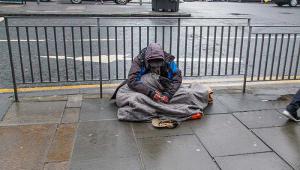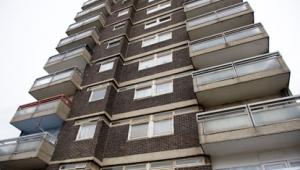In autumn 2018, 4,677 people were rough sleeping in England – a 2% decrease in a year, but a 165% increase since 2010, according to data published today by the Ministry of Housing, Communities and Local Government.
When the government began recording data on rough sleepers in 2010, the figure stood at 1,768.
Compared to 2017, the number of people sleeping rough has increased by 146 (13%) in London and decreased by 220 (6%) in the rest of England.
The capital accounted for 27% of the total number of people sleeping rough in England – up from 24% in 2017.
Women made up 14% of rough sleepers which is the same portion as in 2017, but 6% were under 25 years old, compared to 8% in 2017.
Statistics included in the release from the Combined Homelessness and Information network showed a significant rise in the number of new rough sleepers on London’s streets.
A total of 1,551 people were sleeping rough in London for the first time – 38% higher than the same period last year.
Jon Sparkes, chief executive of homelessness charity Crisis, said: “It’s a damning reflection of our society that night after night, so many people are forced to sleep rough on our streets – with numbers soaring in the capital – especially when we know that with the right commitment, rough sleeping could be ended for good.”
In its 2017 manifesto the Conservative Party promised to halve rough sleeping by the end of this parliament and eliminate it entirely by 2027.
The figures are based on data collected by local authorities in England between 1 October and 30 November 2018.
Gavin Smart, deputy chief executive of the Chartered Institute of Housing, said: “It is frankly unacceptable that thousands of people are being forced to sleep on our streets – and the fact that this number has soared by 165% since 2010 should shame us all.
“We believe that a chronic shortage of affordable homes combined with the welfare reforms introduced since 2012 has created a toxic mix.
“To truly get to the root of the problem, the government must invest in more genuinely affordable housing as well as reviewing the impact of welfare reforms like the benefit cap, universal credit and the housing benefit freeze for private renters.”
Data published in December by the Office for National Statistics found a sharp rise in deaths amongst homeless people.
Polly Neate, chief executive of Shelter, said: “The combination of spiralling rents, a faulty benefits system and lack of social housing means the number of people forced to sleep rough has risen dramatically since 2010.
“We welcome many of the things which the government has been doing to seek to improve services for rough sleepers, and numbers do now seem to be stabilising which is a rare piece of good news, but without fundamental action to tackle the root causes of homelessness these measures will only achieve so much.”
Martin Tett, the Local Government Association’s housing spokesperson, said: “Proper resourcing of local government funding is essential if we are going to end homelessness.
“Councils need to keep 100% of the receipts of any homes they sell to replace and reinvest in building more of the genuinely affordable homes they desperately need as well as the ability to adapt welfare reforms to prevent people from losing their home where possible.”
John Healey MP, Labour’s Shadow Housing Secretary, said: “These new figures are desperately disappointing and show ministers must do much more to make good the huge damage done over the last eight years.”










